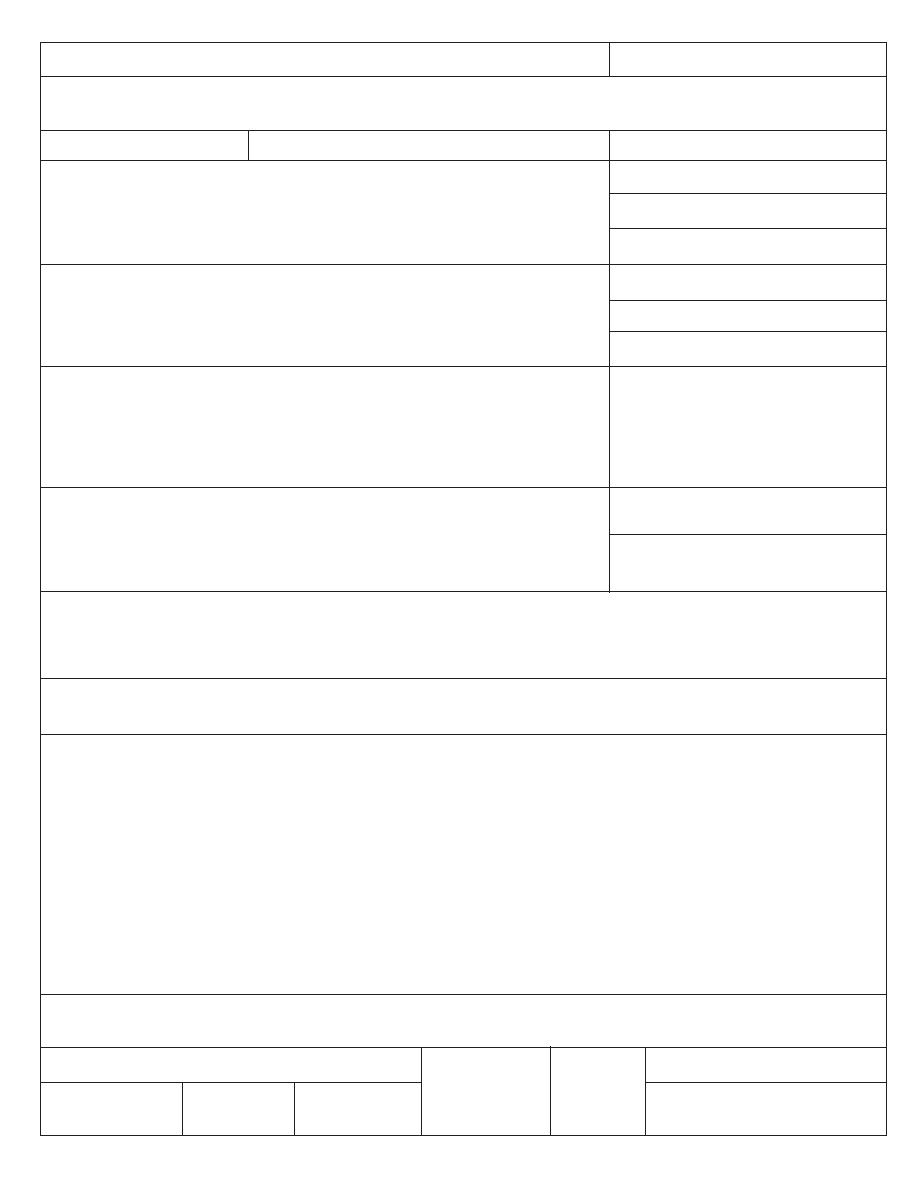
Form Approved
REPORT DOCUMENTATION PAGE
OMB No. 0704-0188
Public reporting burden for this collection of information is estimated to average 1 hour per response, including the time for reviewing instructions, searching existing data sources, gathering and maintaining the
data needed, and completing and reviewing this collection of information. Send comments regarding this burden estimate or any other aspect of this collection of information, including suggestions for reducing
this burden to Department of Defense, Washington Headquarters Services, Directorate for Information Operations and Reports (0704-0188), 1215 Jefferson Davis Highway, Suite 1204, Arlington, VA 22202-4302.
Respondents should be aware that notwithstanding any other provision of law, no person shall be subject to any penalty for failing to comply with a collection of information if it does not display a currently valid
OMB control number. PLEASE DO NOT RETURN YOUR FORM TO THE ABOVE ADDRESS.
1. REPORT DATE (DD-MM-YY)
2. REPORT TYPE
3. DATES COVERED (From - To)
April 2003
Technical Note
4. TITLE AND SUBTITLE
5a. CONTRACT NUMBER
5b. GRANT NUMBER
Overland Erosion Due To FreezeThaw Cycling:
Laboratory Experiments
5c. PROGRAM ELEMENT NUMBER
6. AUTHOR(S)
5d. PROJECT NUMBER
392005 (RSM-A6)
Lawrence W. Gatto and Michael G. Ferrick
5e. TASK NUMBER
5f. WORK UNIT NUMBER
7. PERFORMING ORGANIZATION NAME(S) AND ADDRESS(ES)
8. PERFORMING ORGANIZATION REPORT
NUMBER
U.S. Army Engineer Research and Development Center
Cold Regions Research and Engineering Laboratory
72 Lyme Road
ERDC/CRREL TN-03-3
Hanover, NH 03755-1290
9. SPONSORING/MONITORING AGENCY NAME(S) AND ADDRESS(ES)
10. SPONSOR / MONITOR'S ACRONYM(S)
Office of the Chief of Engineers
Washington, DC 20314-1000
11. SPONSOR / MONITOR'S REPORT
NUMBER(S)
12. DISTRIBUTION / AVAILABILITY STATEMENT
Approved for public release; distribution is unlimited.
Available from NTIS, Springfield, Virginia 22161.
13. SUPPLEMENTARY NOTES
14. ABSTRACT
Ice that forms in soil voids during the freezing process pushes soil grains apart, reducing particle cohesion and soil strength, and making soil
more erodible. This report summarizes 18 experiments to measure erosion rates in a soil that was frozen and thawed once and in the same
unfrozen soil. We hypothesized that soil freezethaw (FT) processes significantly increase upland hill slope erosion during subsequent
runoff events. We selected a frost-susceptible silt to provide an upper bound on this effect. For each experiment, we prepared two identical
bins, one as an unfrozen control, the other to be frozen and thawed. We tested three soil-moisture ranges, three flow rates, and two slopes,
and measured the cross-sectional geometry of the rills that developed and sediment losses through time for each bin. The cross-section
measurements detailed erosion at specific locations along the bins; sediment loss measurements indicated erosion integrated along the entire
bin. The results are the first to quantitatively define the differences in sediment loss and rill formation caused by FT cycling. We will analyze
data from these experiments and do additional experiments to further define FT effects in the soil-erosion process. (However, these results
already demonstrate the importance of FT weakening to soil erosion.) Good regional sediment management in cold climates requires that
erosion prediction models accurately account for important processes such as soil-FT cycling to avoid significant underprediction of soil
losses on hill slopes and in watersheds in cold climates.
15. SUBJECT TERMS
Freezethaw effects
Soil erosion
Rill development
Watershed sediment
Sediment losses
16. SECURITY CLASSIFICATION OF:
17. LIMITATION OF
18. NUMBER
19a. NAME OF RESPONSIBLE PERSON
OF ABSTRACT
OF PAGES
a. REPORT
b. ABSTRACT
c. THIS PAGE
19b. TELEPHONE NUMBER (include area code)
U
U
U
U
23
Standard Form 298 (Rev. 8-98)
Prescribed by ANSI Std. 239.18



 Previous Page
Previous Page
